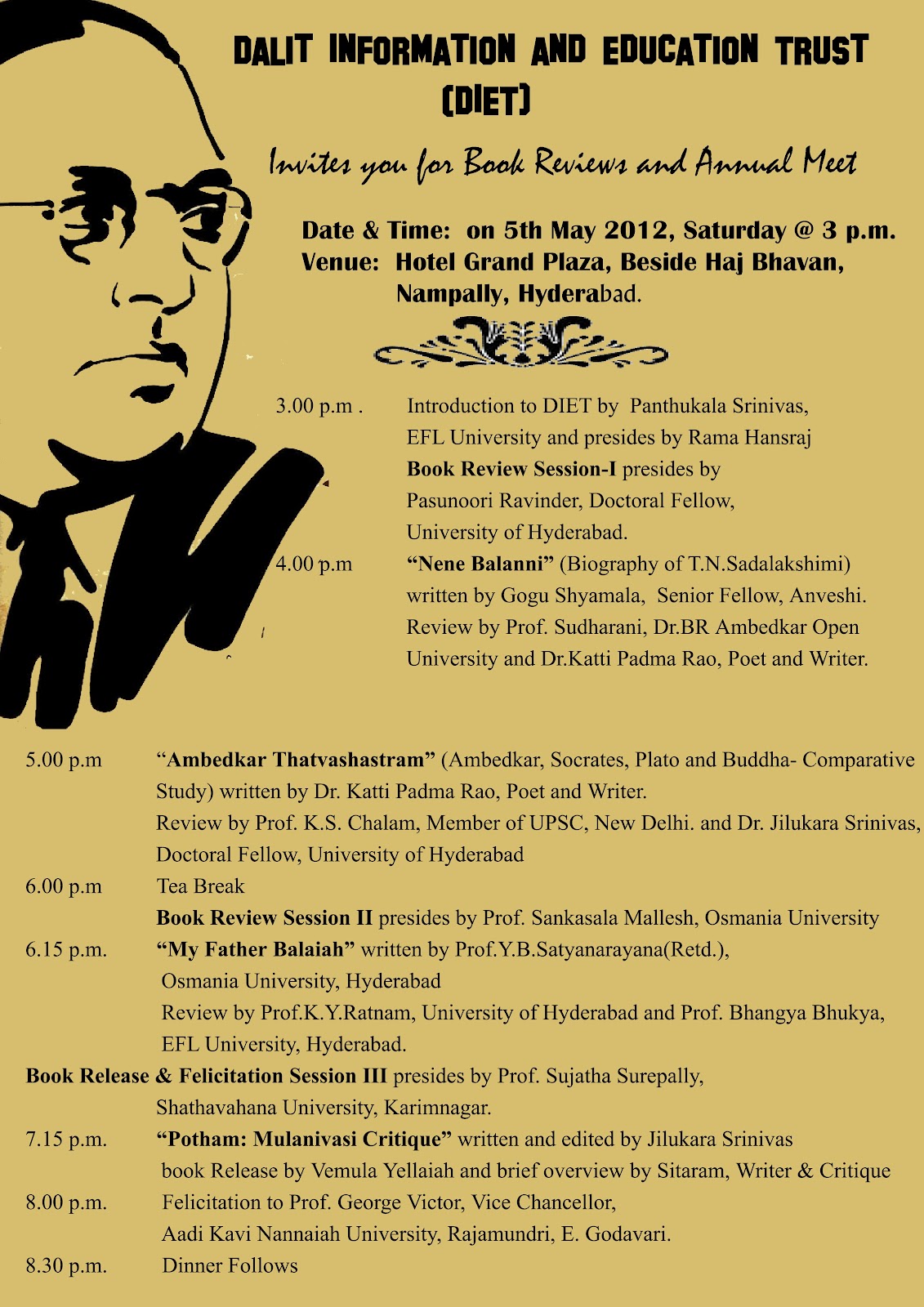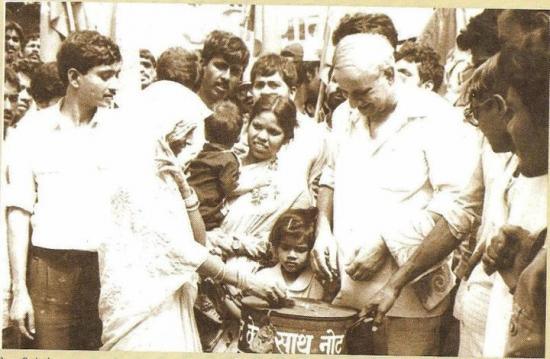by Kanshi Ram
(Released on 24th September, 1982, on the occasion of the 50th Anniversary of Poona Pact)
~~~~~
Dedicated to Mahatma Jotirao Phule
Whose initiation of cultural revolt in colonial India, later taken up by Babasaheb Dr. B.R. Ambedkar, Periyar E.V. Ramaswamy and many other rebellious spirits brought us to this level, where we are thinking, planning and struggling to put an end to the Chamcha Age and usher in a Bright Age for the Shudras and Ati-Shudras.
~~~~~
Preface
As victims of the Brahminical culture, for centuries, the Shudras and Ati-Shudras, now known as the Backward Castes (S. C., S.T., and O.B.C) were passing through the Dark Age.
Around 1848 Jotirao Phule initiated revolt against the Brahminical culture. From the beginning of the 20th century, the Depressed Classes all over India started revolting against the Brahminical culture. Around 1920, they were lucky to have the leadership of Dr B. R. Ambedkar.
Upto 1930, the struggle of the Depressed Classes was largely ignored by Gandhiji and the Congress. During the Round Table Conferences of 1930, 31 & 32 when it could not be ignored, Gandhiji and his Congress fought tooth and nail to deny them their due. But on the 17th August 1932, when the Communal Award was announced, Gandhiji was shocked to see that the able leadership of Dr. Ambedkar could secure for them, both Recognition and Rights.
This was too much for Gandhiji and his Congress. To deny the Depressed Classes their due Gandhiji went on fast till death on 20th Sept. 1932. Such coercive methods forced Poona-Pact on the Depressed Classes. But even the Poona-Pact could not take away Recognition. Thus we see that when Caste Hindus were forced to concede a little bit of power, they took to second line of defence. They saw to it that they must not lose control over it. This was secured by the Poona-Pact, by way of denying the right to Separate Electorates and forcing the Joint Electorates on the Depressed Classes. Through the Joint Electorates, the representatives of the Depressed Classes became only nominal representatives and not real representatives, for no untouchable who did not agree to be a nominee of the Caste Hindus and be a Chamcha in their hands, could be elected in a Joint Electorates in which the Untouchable voter was outnumbered in ratio of 1 to 5.
With this started the Chamcha Age on Sept. 24, 1932, the date when Poona Pact was signed taking away the Separate Electorates and forcing the Joint Electorates on the Depressed Classes of India. Now when the Chamcha Age is 50 years old, it has been decided to write this book, besides denouncing the Poona Pact in a big way all over India.
The purpose of writing this book is to enlighten, awaken and caution the Dalit-Shosihit Samaj (Oppressed and Exploited Society) and its workers and leaders about the large scale existence of this element of stooges (Chamchas) in our oppressed and exploited society. The book is also designed to make the masses, especially the workers, to distinguish between the genuine and the counterfeit leadership. Those who struggle to change the times, the Age, must know and understand the Age in which they are living and operating. The book is designed to serve that purpose as well.
To make the book more purposeful, it has been divided into 4 parts and 17 chapters. Part I and II gives a glimpse of the past struggles, Part III speaks of the present times and Part IV suggests ways and means for the future struggles. Thus all the 4 parts and 17 chapters put together secure continuity of the past, present and future happenings and struggles relevant to the purpose before the Book.
Initially a booklet of about 50 pages was designed to enlighten and caution our own missionary workers about the existence and nature of the element of stooges amongst the oppressed and exploited Indians. Later on, it was thought necessary to give the background, the past events that eventually pushed us into the Chamcha Age. To fulfill this need, the quoting of past events extensively became inevitable. All this brought the book to its present size.
The book contains 3 memorandums and one long statement by Dr. B. R. Ambedkar. Even otherwise Dr. Ambedkar has been largely referred and extensively quoted. Keeping in mind the controversial nature of the topic and the wrong stand on celebrating the golden jubilee of the Poona Pact by the lieutenants of Babasaheb Ambedkar, we are forced to take shelter under the heavy cover of his writings and works. Thus the risk of repetition and over-emphasis has been purposely and wilfully taken to secure continuity, clarity and credibility.
The following 4 words :— (i) Tool (ii) Agent (iii) Stooge (iv) Chamcha carry almost the same meaning, but with slightly different spirit. All over the book, these 4 words have been used depending upon their effectiveness in carrying the meaning and the spirit. In the common man’s terminology, a tool, an agent, or a stooge is termed as Chamcha. And in this book, I have decided to use common man’s terminology. To my mind, it will be fruitful to use common man’s terminology when we fight for his cause.
If you call some one as Chamcha, he will not like it and is likely to go against you. But when you are calling the Age as the Chamcha Age, you are biting so many and they may hit back. But as Chamcha cannot operate on its own, the operator may hit you back with the Chamcha. We should, therefore, be prepared for the “Chamcha Attack’. To keep the attack mild, we have refrained from illustrating the events by giving the names, even at the risk of becoming vague and leaving a lot of guess work for our readers.
At any rate, the Chamcha attack should not frighten us, because a Chamcha is not a powerful or a deadly weapon. Besides, we must aim at the hand that uses the Chamcha. If hit hard, the Chamcha will fall. A fallen Chamcha is absolutely harmless. Thus, this way, we hope to end the Chamcha Age within a short span of about 10 years.
Kanshi Ram
D-S4 Office,
5323, Hardhan Singh Road,
Karol Bagh. New Delhi-110005
24th Sept, 1982
~~~~
Please read the next part here.
[Courtesy: Internet Archive]










